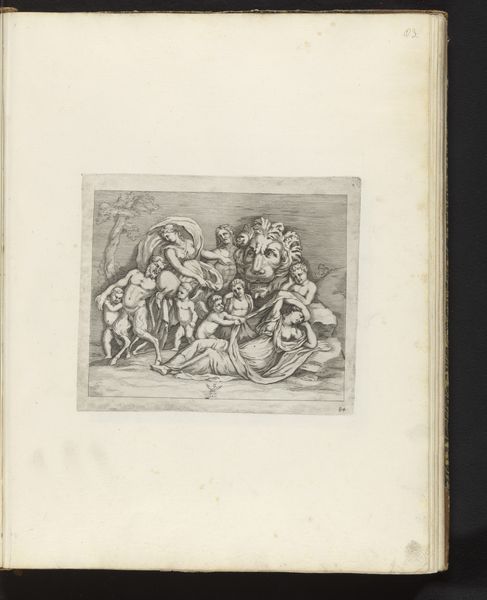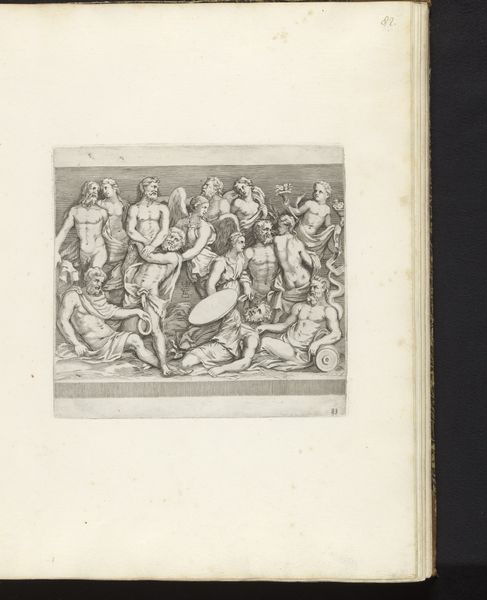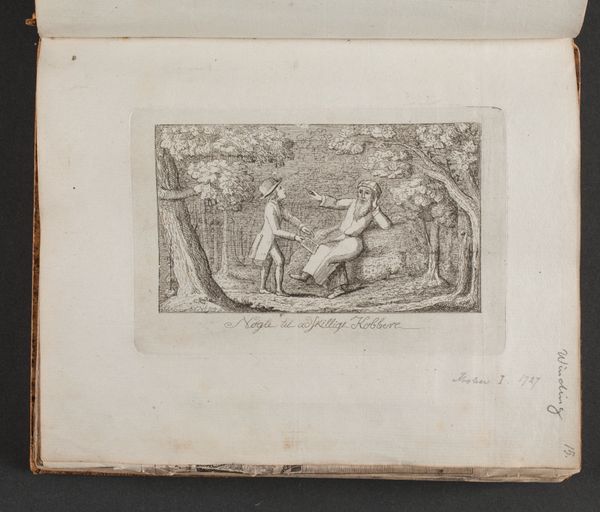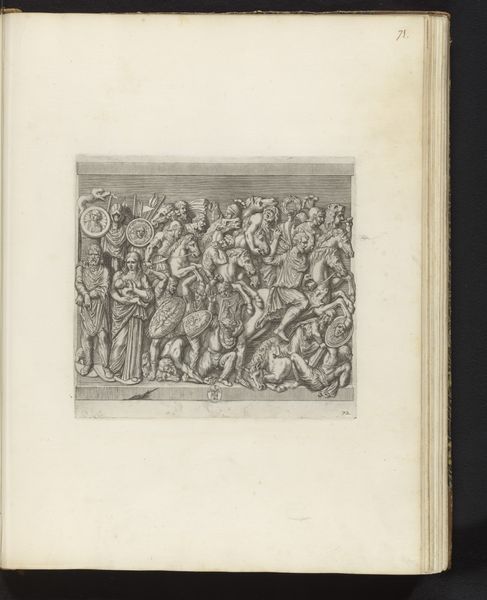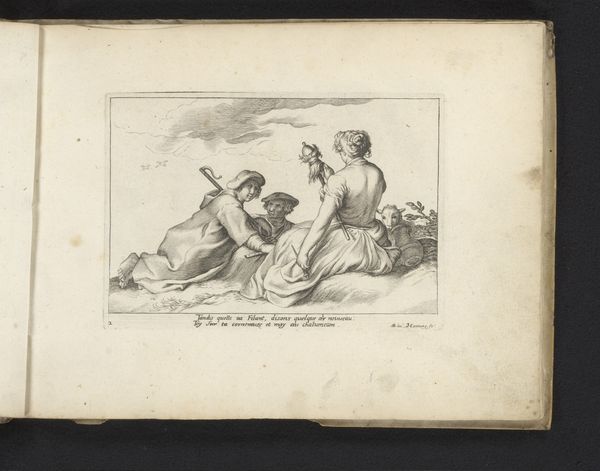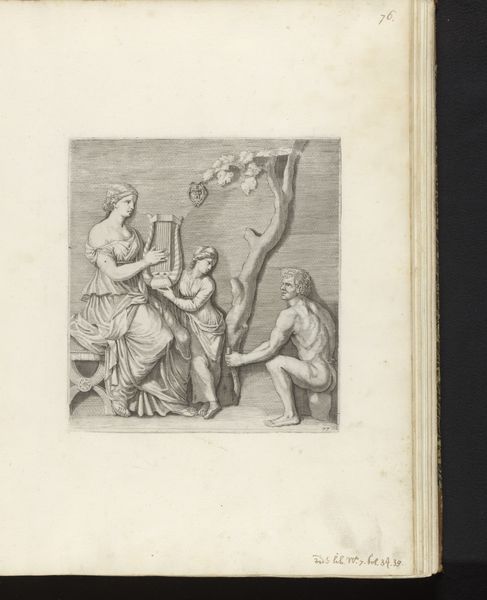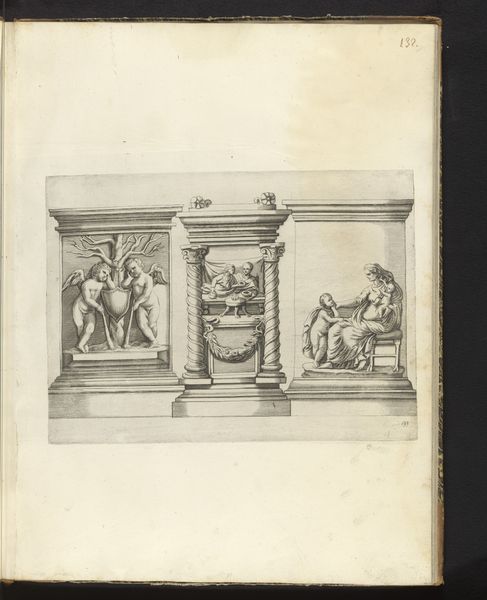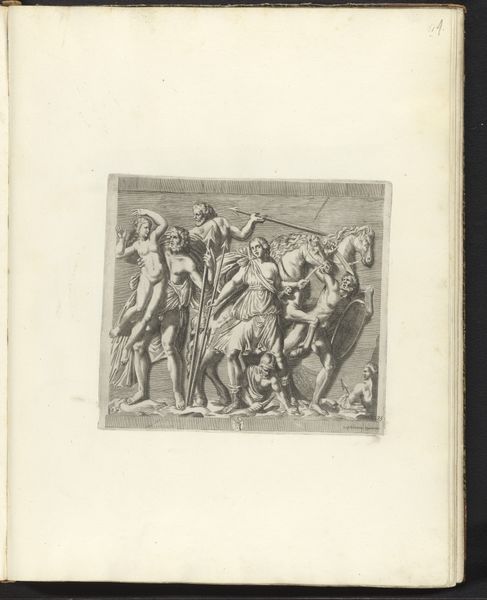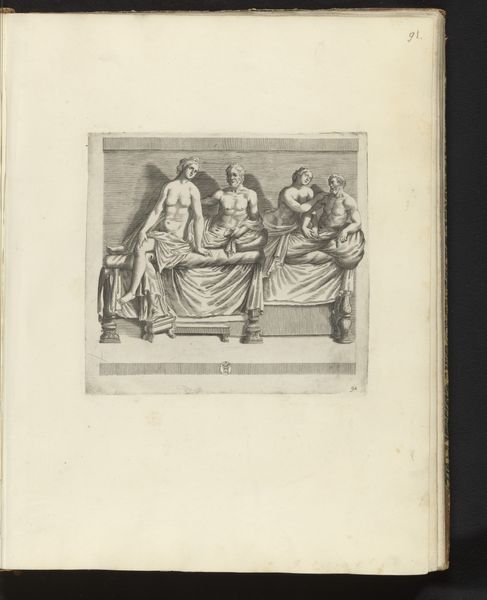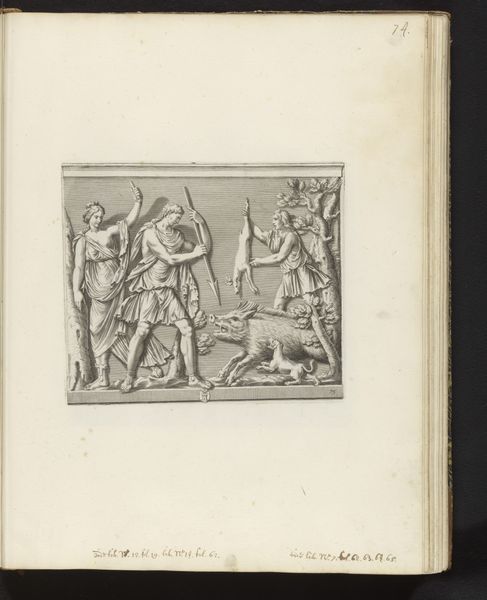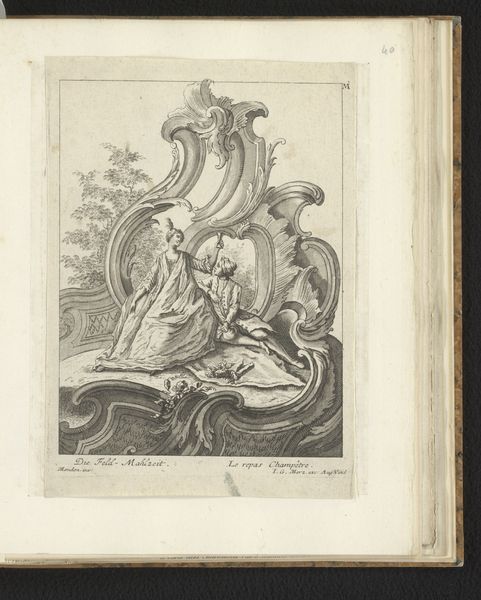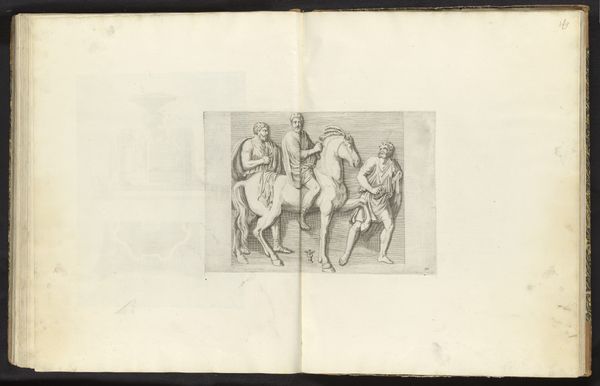
engraving
#
baroque
#
history-painting
#
engraving
Dimensions: height 225 mm, width 242 mm
Copyright: Rijks Museum: Open Domain
Curator: Welcome. We are here today in front of an engraving by Gabriel Ladame, dating from between 1636 and 1647. Its title is "Bas-relief met Mithras die een stier doodsteekt," which translates to "Bas-relief with Mithras slaying a bull." Editor: Oh, what a strange little scene. Stark. Foreboding. The engraving, of course, heightens the contrast. Mithras looks remarkably calm atop the beast, like he’s riding a slightly reluctant pony. Curator: Indeed. The engraving medium itself lends a graphic quality, and it emphasizes line and form. Note how Ladame uses cross-hatching to suggest depth and shadow, giving the scene a sculptural quality that emulates a bas-relief carving. We can see the Baroque influence in the theatricality. Editor: The figure is a bit of a cool customer! And everyone else has the same, oddly detached expression—no fear, no agony. It’s ritualistic, almost… clinical. Are they meant to look unemotional, and what is the impact on you as a viewer? Does it make the image less compelling or all the more fascinating? It’s a paradox, right? Curator: Precisely. This detached representation underscores the theological aspects of the Mithras cult, focusing on sacrifice and cosmic order. Mithras’ posture reflects divine power, contrasting with the bull's vulnerability. Editor: Well, even though the poor old bull is the victim, in the image’s arrangement and design, it gets elevated into the realm of symbol, no longer an animal that suffers. How wonderfully ironic is that? Art can elevate us beyond our humdrum mortal sensibilities and experiences. Curator: A perfect observation, particularly as it concerns the function of historical art such as this piece. The work is not meant to stir emotion so much as contemplation, engaging the viewer intellectually rather than emotionally. Editor: Gabriel Ladame and the engraving itself present this violent image as both powerful and profoundly inert. After our close examination of it, perhaps the real key lies not within the historical story that the piece tells, but its presence, composition, and effect on the senses. Curator: That's quite right, the interplay of the engraving medium, its subject, and symbolic impact offers an ideal opportunity to reconsider how historical artwork impacts a modern audience. Thank you for these insightful comments.
Comments
No comments
Be the first to comment and join the conversation on the ultimate creative platform.
